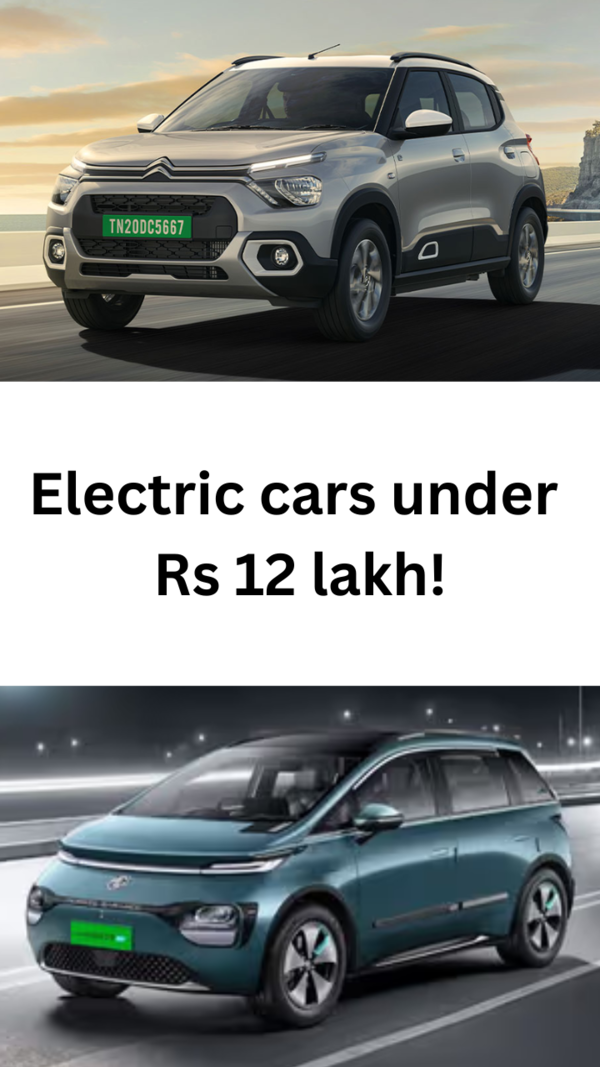- News
- Auto News
- Product & Policy News
- Gentari targets 10,000 EVs by 2025; opportunities and challenges ahead
Trending
Gentari targets 10,000 EVs by 2025; opportunities and challenges ahead
India is moving towards electric mobility but struggles with charging infrastructure. Gentari Green Mobility's app links users to over 1,500 EV chargers. CEO Nikhil Thomas emphasizes the importance of renewable energy and expanding the network. The company plans to deploy 10,000 EVs by 2025 and tackle regulatory issues.

Gentari targets 10,000 EVs by 2025; opportunities and challenges ahead
India is making big strides towards wider adoption of electric mobility as part of its push for cleaner transportation, but one of the main challenges is the lack of widespread charging infrastructure. Gentari Green Mobility recently partnered with a host of EV charging solution providers to come with the Gentari Go App. It will allow users to access over 1,500 EV chargers across India operated by companies such as Numocity, Statiq, and ChargeZone.
In a recent conversation with TOI Auto, Nikhil Thomas, Chief Executive Officer of Green Mobility at Gentari India, shared insights into the challenges and opportunities in integrating renewable energy into the EV charging infrastructure and the company’s future strategies.
As India aims to achieve net-zero emissions by 2070, one of the pressing needs is to integrate renewable energy sources like solar and wind into EV charging networks. Nikhil explained, “The transition to electric vehicles in India is well underway, but to maximize environmental benefits, there is a critical need for advanced energy storage systems and smart grids. These systems can balance demand and supply effectively, but require large-scale investment to upgrade the existing infrastructure.”
When asked about Gentari’s long-term plans for revenue generation and profitability, Nikhil highlighted the company’s focus on renewable energy, hydrogen, and green mobility solutions. "We’re expanding our EV fleet and investing in solar and wind projects to create
On the regulatory front, Thomas acknowledged the challenges posed by India’s complex state-wise regulations for EV infrastructure deployment. “We are focusing on obtaining permits and maintaining open communication with regulators to ensure that our projects meet both national and local standards.”
Out of these 1,500, Gentari itself has deployed over 300 charging points so far.
In a recent conversation with TOI Auto, Nikhil Thomas, Chief Executive Officer of Green Mobility at Gentari India, shared insights into the challenges and opportunities in integrating renewable energy into the EV charging infrastructure and the company’s future strategies.
Ather Rizta Review: Practicality meets performance? | TOI Auto #Ather #Rizta
As India aims to achieve net-zero emissions by 2070, one of the pressing needs is to integrate renewable energy sources like solar and wind into EV charging networks. Nikhil explained, “The transition to electric vehicles in India is well underway, but to maximize environmental benefits, there is a critical need for advanced energy storage systems and smart grids. These systems can balance demand and supply effectively, but require large-scale investment to upgrade the existing infrastructure.”
Gentari is also taking steps to address the uneven distribution of charging infrastructure across India. “Our network is currently concentrated in the North, West, and South, but we are expanding into underserved regions, particularly in the East,” he noted. Collaborations with public and private stakeholders, he said, are essential to accelerating the development of this infrastructure.
When asked about Gentari’s long-term plans for revenue generation and profitability, Nikhil highlighted the company’s focus on renewable energy, hydrogen, and green mobility solutions. "We’re expanding our EV fleet and investing in solar and wind projects to create
sustainable revenue streams" he stated. Gentari aims to deploy 10,000 EVs by 2025, and he mentioned that their Vehicle-as-a-Service (VaaS) model has already placed over 3,000 EVs in India. For the deployment of the EVs, the company recently partnered with Amazon India. Through this collaboration, Gentari will procure and deploy electric vehicles over the next three years for the e-commerce giant's last-mile deliveries.
On the regulatory front, Thomas acknowledged the challenges posed by India’s complex state-wise regulations for EV infrastructure deployment. “We are focusing on obtaining permits and maintaining open communication with regulators to ensure that our projects meet both national and local standards.”
End of Article
FOLLOW US ON SOCIAL MEDIA









